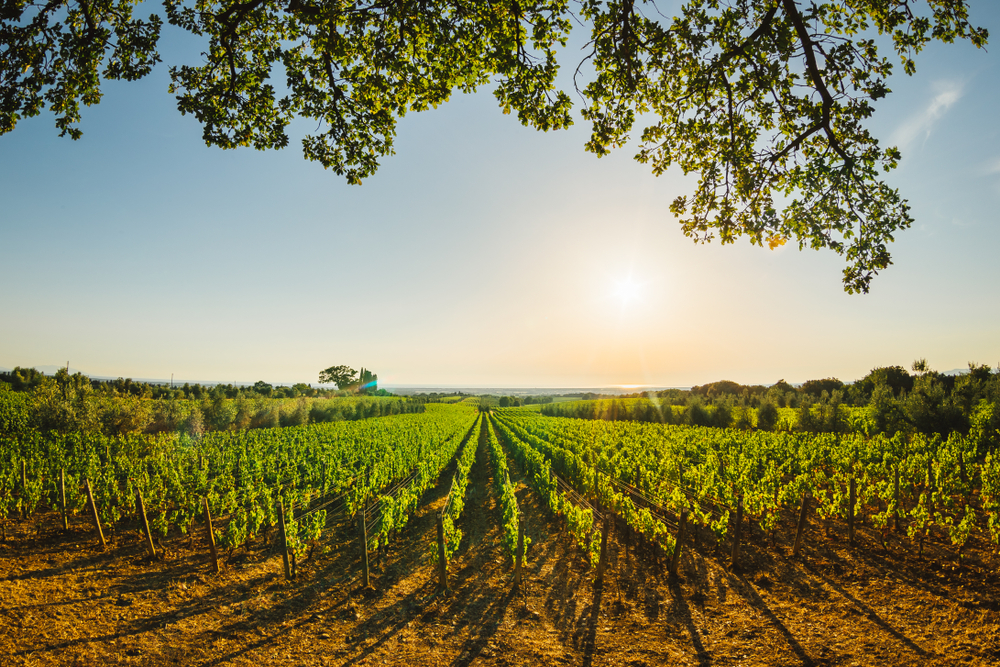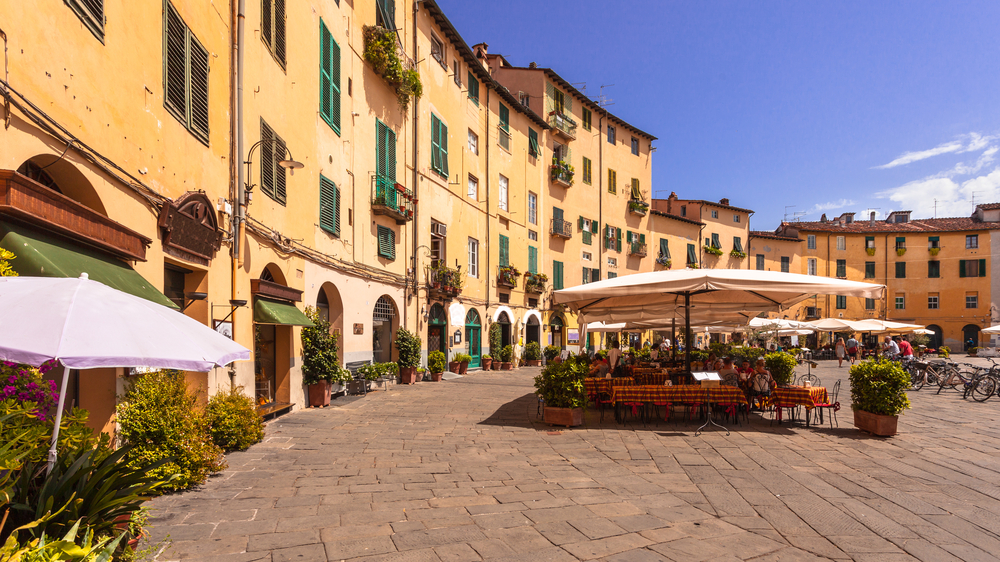I spoke with Angelo Carotenuto co-owner and founder of LivItaly Tours about responsible tourism and LivItaly’s dedication to providing quality tour services that adhere to the standards of responsible tourism. Angelo, originally from Rome, shares how his heritage has influenced his commitment to showing travelers his country in a respectful, responsible and eco-conscious manner. To hear an industry leader’s point of view on the differences between mass tourism and responsible tourism, the company’s own sustainable strategies and more, read our conversation below.
Why is LivItaly dedicated to responsible tourism? Is your commitment to responsible tourism in any way motivated or inspired by your Roman heritage?
“Yeah absolutely. I would be more specific, I wouldn’t just limit it to my Roman heritage, as a born and raised Italian my parents, a good traveling family my parents always made a point to show me the importance of the beauty and the historical attractions of this country. When I decided to work in the industry I found a lot of companies that opted for a use of the territory for their own money making rather than a respect of the territory for their own money making which are very different. You can do both. You can respect the territory, respect the heritage, respect the people that are in it and still run a successful business. ”
 Can you briefly describe the difference between mass tourism and responsible tourism?
Can you briefly describe the difference between mass tourism and responsible tourism?“The very first aspect is size and everything that is related to size will have an impact. So when you’re leading a group of 15-20 or 50 people inside a gallery that is supposed to have a set level of humidity, temperature, dust and pollution you’re automatically disrupting that balance so much that that gallery, museum, painting or site is being drastically affected by it. At the end of the day you can still have the same amount of people but doze them in small pills so that that attraction is can absorb that volume. Responsible tourism does not mean fewer people it just means a better control over the same amount of people that wish to enjoy it. The headsets- a lot of tour companies are using disposable headphones and that is going into the environment. One could also argue about radio frequencies. Everybody is so worried about 5G. Imagine all these radio frequencies going through one museum of maybe a couple of miles at one time. All of this is impacting, so if you’re trying to make valuable choices and wish to see Venice, Barcelona, Rome, Milan, London-I’m talking about places that are suffering from mass tourism- you can still do it but do it more responsibly and size would be the first aspect to look at.”
The four main principles that are generally attributed to responsible tourism are minimizing environmental impacts, respecting host cultures, maximizing the benefit to local people, maximizing the authenticity of the tourist’s experience. How do LivItaly tours embody all of these?
“We chose the tour group size of 6 because not only will a tourist be passively agreeing to our mission by accepting that size for all the above mentioned reasons but then our tour guides have a voice in it and they can be the educators of this is how things work in this country, this is how you respect this culture, you have more time and the ability to be much more intimate in the explanations of certain sensitive arguments that you would not be able to if you’re just holding a flag, with headphones, just trying to get through a museum with 30 people.
We don’t use headsets unless it’s particularly crowded and noisy or our tour guides are having a bad voice day. So if the environment itself is already so corrupt that we need to absolutely give an aid to our tour guide and we make sure to not use disposable headphones.
Paperless policy: that’s a given. There’s no need of printing anymore.
We don’t use big seater buses. We use only modern mercedes vehicles for local transportation and we are now implementing tours that include high speed trains that generally have a lesser impact than a 50 seater bus.
Respecting host cultures: this is what our tour guides eventually end up doing on every tour. Imagine a food tour, with a group of six, a tour guide, slash foodie will have the ability to introduce the host of the restaurant, tell the story of the restaurant, tell the importance of the food that they’re serving, what’s behind it, where does this food come from. All of this is really important to us and really important to the business that we’re visiting. And then obviously it has much more of an impact if you’re able to look straight into the eyes of your client thanks to the size of the group and make sure that that concept that message that relevancy goes through to that traveler.
We have the option to choose local businesses because we don’t need huge halls or big hotels or chains because we don’t have the need for space. We can choose local businesses, small family-owned places that then will not only benefit from the clients that we directly put in but also will benefit because that client will have found ulterior reasons to explore that business further or to suggest it.”

What makes responsible tourism in Italy so ideal? Can you describe the advantage of experiencing Italy through responsible VS. mass tourism? Has this been confirmed from your audience? If so how?
“I don’t think it’s just about Italy at this point. I think that the ultimate scope, which will probably take years down the line, is that travelers will understand the added value for both themselves, the cultural sake and the territory’s sake that they become advocates of this way of traveling and of these types of choices that we’re teaching them to make. We want them to choose this type of traveling elsewhere and not just Italy. This is part of why we’re trying to expand and go to Paris, London, Barcelona etc. And ultimately therefore in a way kind of oblige the large tour operators to rethink their numbers and rethink the way that they’re offering if they even have the will or the choice at this point.
As mentioned above, sustainability is a big part of responsible tourism. How is Livitaly sustainably superior to other companies who also cater to both large and small groups?
“Well, nobody else is offering these group sizes. No one is offering maximum of six people groups. Everybody is offering 12 or more. And per my previous argument that size matters, then we are at the top of the ideal solution.
Which tours are LivItaly’s most sustainable tours? Can you walk me through one?
“Any walking tour. Even museum tours, when you’re leading a group of people through a museum there are all sorts of aspects that are detrimental to that museum’s well-being. For example the Sistine Chapel. It is a large room it’s 13.4 meters wide and almost 50 meters wide. But the door to enter is very tiny and there are masses of people that try to enter at once through that door and then spread out automatically into that room. The room has sixteen air conditioning units, last generation that control humidity, pollution and dust and temperature. They were installed about five years ago. No matter how good these air conditioning units are, when hundreds of people are invading a space at once, these machines automatically begin to shake because they’re trying to keep all these levels right, producing more dry air, absorbing pollution, etc. When you make a choice of a group size like ours or a private tour, we’re entering together with the tour guide, but the impact that we’re having is almost invisible. It’s almost not perceived by those machines.”
Do you think it has become increasingly evident in the industry that responsible tourism will become the only model for tourism in the future?
“No. Tourism is made of too many layers. Responsible tourism is expensive. One of the social layers that I’m talking about are those people that don’t necessarily have the kind of budget for responsible tourism up to this point. Like eating organic food was really expensive up until five years ago maybe now it isn’t anymore. Currently, with how costly certain places are and how costly staff is, it is a little bit of a niche kind of target. Even though we try to be as competitive and accessible as possible and we are, there will always be for example the group that comes from a church in Argentina that wishes to come see the Pope and stay three days in Rome. They will never be able to afford five tour guides and seven cars to go around. What then has to come is not tour operators but local administration that limits that in a way, still giving access to people with lower budgets. So what they can do is limit the size of the groups that go inside a museum. They can limit the amount of buses that are inside a city. They can limit the amount of hotels or beds that are inside a city. They can limit the amount of bed and breakfasts that are in the city where residents are obliged to go and live outside. All of these things that can happen are to do with administrators and legislators before tour operators.”
Would you say that tourists are becoming more aware and more demanding of this alternative kind of tourism in place of mass tourism?
“I think for now, they’re being more egotistical rather than understanding what the better good of it is. It’s like if somebody was eating at Trader Joe’s or Whole Foods and buying organic food- at first ten years ago it was because I want to be healthy, I want to look good, and I don’t want to pay for the consequences of eating McDonald’s every day. Now you don’t go to McDonald’s and you choose Whole Foods because it’s better for the environment. So it’s the same thing. Our duty as small businesses and tour operators is to educate our clients that the choice they make is not only good for them or even better for them because it’s a better quality service, but you’re actually making a difference on a cultural heritage and environmental administration.
People are becoming more aware of mass tourism because the residents of these places are complaining. People are starting to get a little frustrated with the amount of uncontrolled masses that there are here. And the amount of pollution that they create and the amount of rubbish and trash they’re creating, the amount of residents that are obliged to leave and local businesses that are closing. All of this is happening. What I’m concerned about is that sensitive travelers that do have an idea that this is happening or have done some research will then decide to go elsewhere. They don’t want to be part of that and decide not to go to Barcelona or not to go to Venice or not to travel at all.”
And is that just because they’re not aware that services like yours exist?
“Exactly. The opportunity that needs to be put in front of their eyes is that you can travel and have a lower impact, you just have to understand how to do it and that’s kind of our job.”
By: Emma Seiwell

